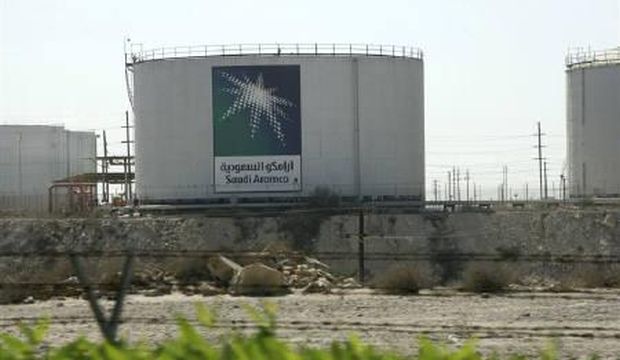
This file photo shows oil tanks at the Saudi Aramco headquarters during a media tour at Damam city, Saudi Arabia, on November 11, 2007. (Reuters/Ali Jareki/Files)
Al-Khobar, Asharq Al-Awsat—Saudi Arabia’s oil production rose in 2014 to its highest levels in two years, according to a report by energy consultant PIRA Energy Group, as the world’s biggest oil exporter continues to pursue its strategy of maintaining market share amid some of the lowest oil prices in recent years.
The report said the Kingdom had upped its oil output to an average of 9.71 million barrels per day (bpd) in 2014, its highest average daily production rate since 2012 and up from 9.63 million bpd in 2013.
This comes on the back of increased activity from Saudi refineries and rising domestic electricity consumption.
Refineries in the Kingdom burned a record 2.22 million bpd in December of 2014, the highest in the country for a single month since January 2002, according to data from Jodi Oil.
The data also showed that on average the Kingdom last year burned more crude per day for electricity generation than any year since 2009, processing 553,000 bpd in 2014, up 14.5 percent from the year previous.
A new 400,000 bpd-capacity refinery, known as Satorp, and jointly owned by the Kingdom’s state-owned oil company Saudi Aramco and French oil giant Total, reached full capacity in August.
Another refinery, a joint project between Aramco and Chinese oil company Sinopec, should be launched in Yanbu, on Saudi Arabia’s Red Sea coast, later this year, and also has a processing capacity of 400,000 bpd.
Saudi Arabia, like other OPEC countries, is keen to maintain its global market share amid the lowest oil prices seen since the aftermath of the global financial crisis in 2008–2009.
Oil prices have lost around half of their value since June of 2014 when they reached above 114 dollars a barrel, amid a surplus in global supply and lukewarm demand from Europe and the United States.
Many observers expected OPEC to slash its collective production rate in November of 2014 in a bid to drive up prices, but the organization instead opted to maintain its global market share by directing member countries to maintain their own individual market shares.
